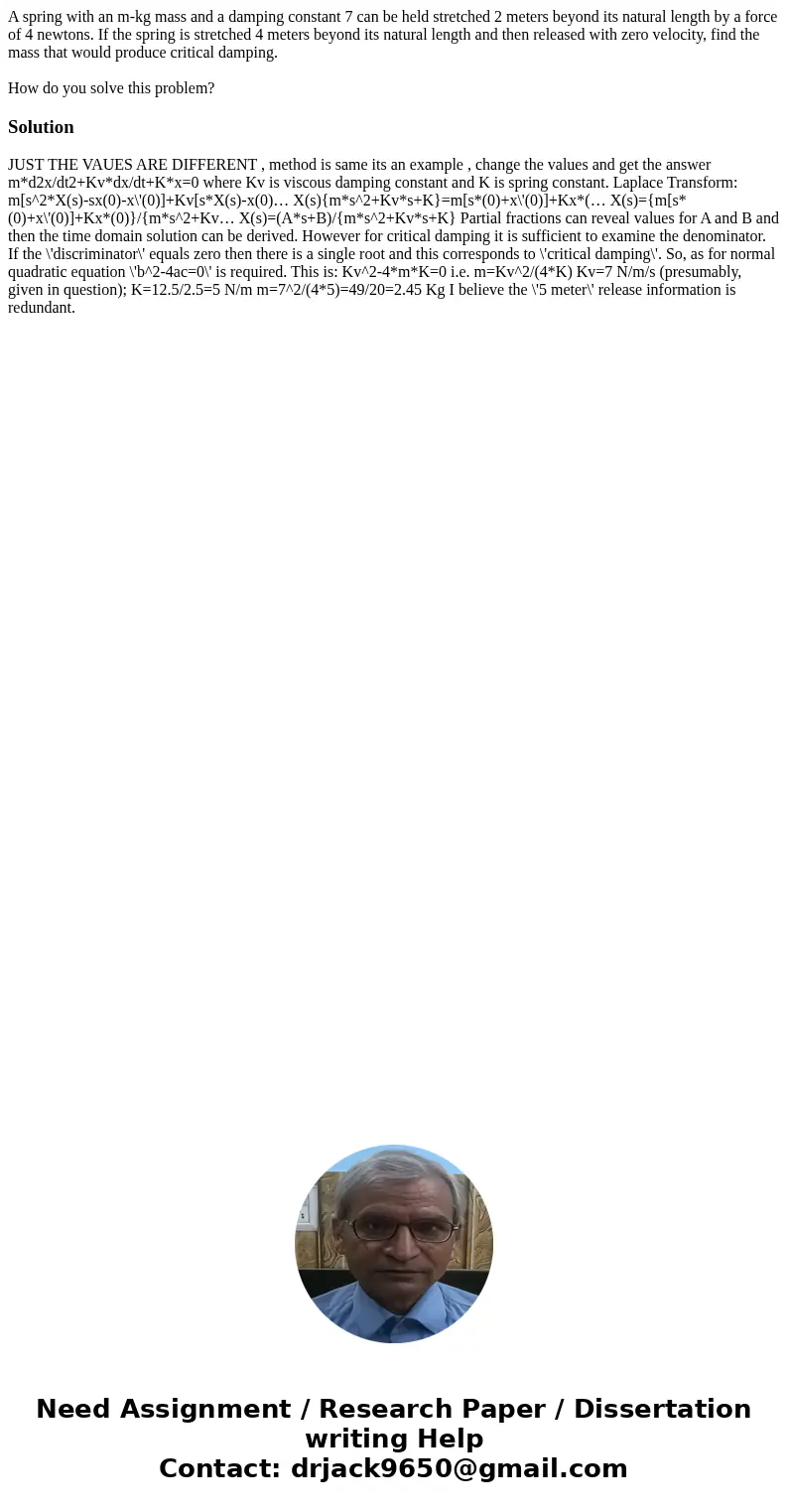A spring with an mkg mass and a damping constant 7 can be he
A spring with an m-kg mass and a damping constant 7 can be held stretched 2 meters beyond its natural length by a force of 4 newtons. If the spring is stretched 4 meters beyond its natural length and then released with zero velocity, find the mass that would produce critical damping.
How do you solve this problem?
How do you solve this problem?
Solution
JUST THE VAUES ARE DIFFERENT , method is same its an example , change the values and get the answer m*d2x/dt2+Kv*dx/dt+K*x=0 where Kv is viscous damping constant and K is spring constant. Laplace Transform: m[s^2*X(s)-sx(0)-x\'(0)]+Kv[s*X(s)-x(0)… X(s){m*s^2+Kv*s+K}=m[s*(0)+x\'(0)]+Kx*(… X(s)={m[s*(0)+x\'(0)]+Kx*(0)}/{m*s^2+Kv… X(s)=(A*s+B)/{m*s^2+Kv*s+K} Partial fractions can reveal values for A and B and then the time domain solution can be derived. However for critical damping it is sufficient to examine the denominator. If the \'discriminator\' equals zero then there is a single root and this corresponds to \'critical damping\'. So, as for normal quadratic equation \'b^2-4ac=0\' is required. This is: Kv^2-4*m*K=0 i.e. m=Kv^2/(4*K) Kv=7 N/m/s (presumably, given in question); K=12.5/2.5=5 N/m m=7^2/(4*5)=49/20=2.45 Kg I believe the \'5 meter\' release information is redundant.
 Homework Sourse
Homework Sourse